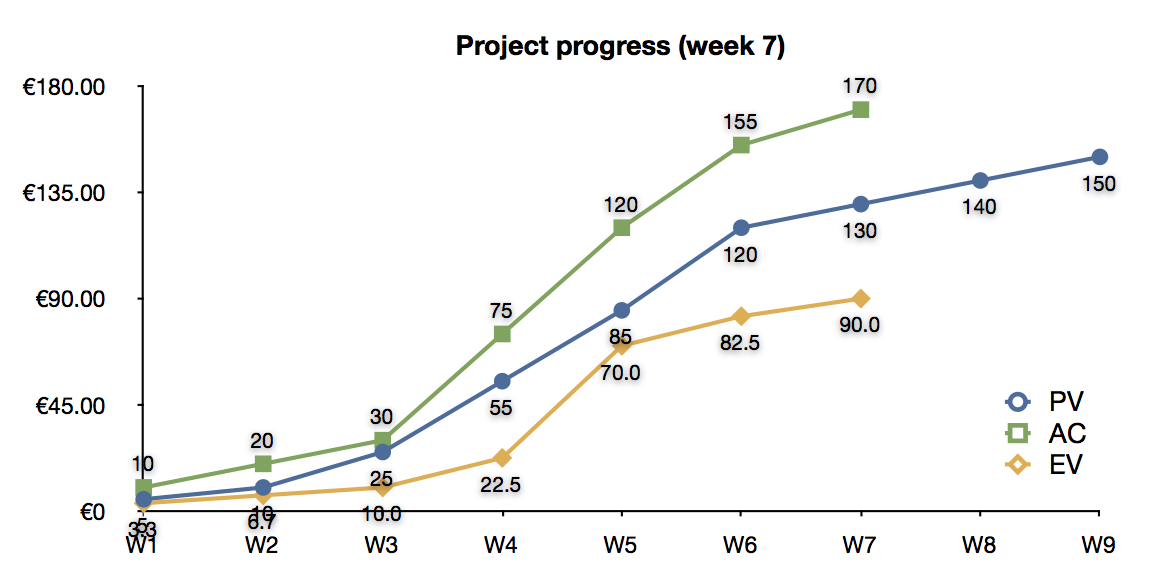Measuring Time: Earned value or earned schedule?
Controlling a project is key to the success or failure of the project. Earned Value Management (EVM) is a well-known technique to control the time and cost performance of a project and to predict the final project duration and cost. It is an easy tool to generate early warning signals to timely detect project problems or to exploit project opportunities. An overview of the EVM metrics is given in “Earned Value Management: An overview” and the formulas are summarized in “Earned Value Management: The EVM formulary”.
In “Earned Value Management: The three key metrics”, it has been discussed that EVM relies on three key input metrics, known as the planned value (PV), the actual cost (AC) and the earned value (EV). In this article, a fourth key metric is discussed which is based on the periodic values of the PV and EV. Figure 1 shows the S-curves for the three key parameters over time, up to week 7. Only the planned value is known from the project start until the end, as a result of the baseline schedule construction. The actual cost and the earned value are based on weekly progress measurements during project execution.


© OR-AS. PM Knowledge Center is made by OR-AS bvba | Contact us at info@or-as.be | Visit us at www.or-as.be | Follow us at @ORASTalks


